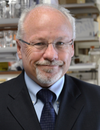07:00 | Morning Coffee and Tea Plus Networking in the Exhibit Hall |
|
Session Title: Organ-on-a-Chip and Tissue-on-a-Chip: Technologies Meet Applications |
| |
07:30 | A Microphysiolgical Model of Vasculature and MSC-derived Tissue Interaction
Ian Whelan, Lead Author (PhD Student), Trinity Biomedical Sciences Institute, Ireland
This project aims to develop a microfluidic platform to study the interaction between vasculature and stem cell derived skeletal tissues. |
07:45 | Deep Organ: How Machine Learning Can Improve Organs on a Chip Experiments
Davide Di Giuseppe, Researcher, University of Rome "Tor Vergata", Italy
The use of organs-on-a-chip in biology has led to a profound change of paradigm in the way of conceiving experiments and understanding biological phenomena. But, at the same time, all its potentialities are not yet completely exploited. There is a plenty of information that can be extrapolated from the time-lapse microscopy images of OOC experiments using deep learning analysis. Machine learning includes cell localization and tracking, feature extraction, and cell classification thanks to the use of modern video analysis algorithms and deep learning architectures. The latter approach allows not only to improve effectiveness of the analysis but to conduct massive studies in which diverse biological conditions and cell types can be considered at a time, thus reducing time to market and incrementing the available testing rate. |
08:00 | Bioengineered 3D Vascularized Glioblastoma Model
Guohao Dai, Associate Professor, Department of Bioengineering, Northeastern University, United States of America
Glioblastoma (GBM), the most malignant brain cancer, remains deadly despite wide-margin surgical resection and concurrent chemo- & radiation therapies. Two pathological hallmarks of GBM are diffusive invasion along brain vasculature, and presence of therapy-resistant tumor initiating stem cells. Deconstructing the underlying mechanisms of GBM-vascular interaction may add a new therapeutic direction to curtail GBM progression. However, the lack of proper 3D models that recapitulate GBM hallmarks restricts investigating cell-cell/cell-molecular interactions in tumor microenvironments. In this study, we created GBM-vascular niche models through 3D bioprinting containing patient-derived glioma stem cells (GSCs), human brain microvascular endothelial cells (hBMVECs) cells, pericytes, astrocytes and various hydrogels to model glioma/endothelial cell-cell interactions in 3D. In summary we have created GBM-vascular niche models that can recapitulate various GBM characteristics such as cancer stemness, tumor type-specific invasion patterns, and drug responses with therapeutic resistance. Our models have a great potential in investigating patient-specific tumor behaviors under chemo-/radio-therapy conditions and consequentially helping to tailor personalized treatment strategy. The model platform is capable of modifying multiples variables including ECMs, cell types, vascular structures, and dynamic culture condition. Thus, it can be adapted to other biological systems and serve as a valuable tool for generating customized tumor microenvironments. |
08:30 |  | Keynote Presentation “Cancer-on-a-Chip”: Basic and Translational Studies in Cancer Biology
Steven C. George, Edward Teller Distinguished Professor and Chair, Department of Biomedical Engineering, University of California-Davis, United States of America
Tissue engineering holds enormous potential to not only replace or restore function to a wide range of tissues, but also to capture and control 3D physiology in vitro (e.g., microphysiological systems or “organ-on-a-chip” technology). The latter has important applications in the fields of drug development, toxicity screening, modeling tumor metastasis, and repairing damaged cardiac (heart) muscle. In order to replicate the complex 3D arrangement of cells and extracellular matrix (ECM), new human microphysiological systems must be developed. The past decade has brought tremendous advances in our understanding of stem cell technology and microfabrication producing a rich environment to create an array of “organ-on-a-chip” designs. Over the past six years we have developed novel microfluidic-based systems of 3D human microtissues (~ 1 mm3) that contain features such as perfused human microvessels, primary human cancer, mouse tumor organoids, stem cells, and spatiotemporal control of oxygen. The technologies are part of two early start-up companies, Kino Biosciences and Immunovalent Therapeutics, based in Irvine, CA and St. Louis, MO. This seminar will describe our approach and early results, including basic and translational studies in cancer biology. |
|
09:00 |  It’s the Economy – Industrial Aspects of Organ-on-a-Chip Device Manufacturing It’s the Economy – Industrial Aspects of Organ-on-a-Chip Device Manufacturing
Holger Becker, Chief Scientific Officer, Microfluidic ChipShop GmbH
While academic activities in the organ-on-a-chip field have multiplied in recent years, it becomes apparent that translating academic results into commercially viable products can be challenging. This is even more true for such devices which require a generically multidisciplinary approach, combining application know-how with surface chemistry, microfabrication and materials technology. In this presentation, we will give an overview over available solutions for such products and explain classical pitfalls on the way from the academic laboratory bench to an industrial product.
|
09:30 |  | Keynote Presentation Organ-on-a-Chip Technology as a Routine Tool in Drug Discovery and Development
Paul Vulto, Managing Director, MIMETAS, Netherlands
Organ-on-a-Chip technology is a new paradigm in drug testing. The technology has as its aim to raise the physiological relevance of traditional cell culture by combining this with microfluidic techniques. Organs-on-a-Chip are 3D tissues that capture the complexity of in vivo tissues including 3D morphology, extracellular matrix embedment, multiple cell types, vascular structure and perfusion flow.
In this presentation I will introduce culture and interrogation of complex 3D tissues, such as liver, kidney, gut and brain tissue. The tissues are grown on the OrganoPlate® platform, that allow culturing of over 40 tissues in parallel. The tissues are embedded in an extracellular matrix gel and comprise both stromal tissue, bloodvessel structures as well as epithelial barriers with clear apical and basal sides. The platform can be interrogated using automated imaging equipment as well as all standard equipment including fluorescence-based assays, immuno-histochemical staining, barrier integrity monitoring, transport studies, viability assays, qRT-PCR, ELISA’s and many others. Last but not least, operation of the platform is thus straightforward that an end-user who is not necessarily an expert in the field of microfluidics is able to perform the study. In this presentation I will show examples of Organ-on-a-Chip tissues for use in drug safety testing and disease modeling. |
|
10:00 | Phenotypic Screening in 3D Culture Including ECM: Advantages and Challenges
Nathalie Maubon, CEO/CSO, HCS Pharma, France
Grégory Maubon, Digital Coordinator, HCS Pharma, France
Cellular assays in 3D culture have shown many advantages to better mimic the in vivo situation. 3D technologies for phenotypic screening have become simpler and more accessible, such as the use of Ultra Low Attachment (ULA) plates. However, we can now go even further using 3D technologies which allow us to reproduce the micro-environment of healthy or pathological organs of interest. During this talk, we will show how the cellular microenvironment impacts the proliferation and/or differentiation of cells. A few examples from the fields of oncology, CNS and metabolic disease will be presented. High-Content Screening (HCS) devices, such as our ImageXpress® Micro Confocal system, are now fast enough and sensitive enough to allow image acquisition in 3D cellular models. Nevertheless, to go further, perceptions and processes need to be changed. We will discuss cutting-edge new technologies, including virtual and augmented realities, deep learning and machine learning, and explain how these new technologies can be of benefit to phenotypic screening. |
10:30 | Morning Coffee and Tea Break and Networking in the Exhibit Hall |
11:00 |  Going 3D All The Way: 3D Microtissues in Modular Organ-on-a-Chip Solutions For Human-Centric Drug Discovery Going 3D All The Way: 3D Microtissues in Modular Organ-on-a-Chip Solutions For Human-Centric Drug Discovery
Jan Lichtenberg, CEO and Co-Founder, InSphero AG
Scaffold-free 3D microtissues have evolved into the most widely used technology for highly predictive and most scalable cell-based assays in drug safety and discovery. While they provide a faithful in-vitro approximation of the in-vivo tissue microenvironment, they were not amenable for modeling microphysiological features up to now. Here, we present a new multi-organ-on-a-chip system featuring microfluidic channels and chambers that were specifically engineered for culturing 3D microtissues and organoids under physiological flow conditions. The platform complies with the SBS plate standard and is made of polystyrene to prevent unwanted compound absorption. It allows for an automated and on-demand interconnection of up to 10 microtissues per channel in a highly flexible fashion. Different from the majority of organ-on-a-chip solutions, the off-chip formation of 3D microtissues allows for an optimized tissue engineering processes, pre-loading quality control and higher yields. Enabling an automated removal and re-insertion of 3D microtissues from and into the device, this platform finally ads deep endpoints such as next-gen sequencing, lipidomics, FACS to the analytical toolbox for organ-on-a-chip applications. We’ll illustrate this new approach with examples in DMPK for low clearance and microtissue cross talk.
|
11:30 |  | Keynote Presentation Human Vascular Microphysiological Systems to Model Genetic and Acquired Diseases
George Truskey, R. Eugene and Susie E. Goodson Professor of Biomedical Engineering, Duke University, United States of America
Cardiovascular disease represents the major cause of death in much of the world today. Current in vitro models fail to recapitulate the complex tissue architecture and 3D structure of in vivo vasculature and animal models do not accurately model disease states. To address these limitations, we developed an endothelialized tissue engineered blood vessel (eTEBV) microphysiological system. Small-diameter eTEBVs (400-800 µm) were prepared by plastic compression and perfused at physiological shear stresses for 1- 5 weeks. The eTEBVs expressed von Willebrand factor and demonstrated endothelial cell (EC)-specific release of nitric oxide (NO). Acute stimulation by TNFa transiently inhibited ACh-induced relaxation and was eliminated by pre-exposure of eTEBVs to therapeutic doses of statins. Treatment of eTEBVs with enzyme-modified low-density lipoprotein (eLDL) caused activation of endothelial cells and promoted monocyte adhesion and transmigration. Further, treatment of eTEBVs with 50 µg/mL of eLDL for 96 hours caused monocytes to become foam cells and inhibited vasoactivity, indicators of early atherosclerosis. Monocyte accumulation and foam cell formation were inhibited by addition of lovastatin with eLDL. Using smooth muscle cells (SMCs) and ECs derived from induced pluripotent stem cells (iPSCs), we produced a functional eTEBV model of Hutchison-Gilford Progeria Syndrome (HGPS), a rare, accelerated aging disorder caused by an altered form of the lamin A (LMNA) gene termed progerin. eTEBVs fabricated with SMCs from individuals with HGPS show reduced vasoactivity, increased medial wall thickness, calcification and apoptosis in comparison to eTEBVs fabricated with SMCs from normal individuals or primary MSCs. HGPS viECs aligned with flow but exhibited reduced function compared to normal controls. Relative to eTEBVs with healthy cells, HGPS eTEBVs showed reduced function and markers of cardiovascular disease associated with the endothelium. HGPS eTEBVs exhibited a reduction in both vasoconstriction and vasodilation and HGPS viECs produced VCAM-1 and E-selectin in eTEBVs with either healthy or HGPS viSMCs. HGPS eTEBV function could be restored by addition of a farnesyl transferase inhibitor with or without a rapamycin analog. These results indicate that we can use human eTEBVs to model a variety of diseases in vitro. |
|
12:00 |  A Breathing Human Lung-on-Chip for Drug Transport and Safety Studies A Breathing Human Lung-on-Chip for Drug Transport and Safety Studies
Janick Stucki, CEO and Technical Director, AlveoliX AG
Organs-on-chips (OOC) are widely seen as the next generation of in-vitro models. In comparison to standard cell culture systems based on static 2D and 3D tissue systems, they additionally allow to better model the dynamic biomechanical microenvironment of specific organs. However, for the successful implementation of OOC in drug safety assessment and preclinical decision making, it is important to improve experimental throughput and robustness of these systems. The AlveoliX breathing lung-on-chip array is based on a two-part design and equipped with a passive medium exchange mechanism. This allows a user-friendly handling of the system and a precise control of the ultra-thin, elastic and porous PDMS membrane. The standard well-plate footprint of the chip includes an array of 12 independent wells. This standard format increases experimental throughput and allows high compatibility with laboratory equipment. By modelling a healthy alveolus-on-chip, we were able to show that primary alveolar epithelial cells from patients, cultured at the air-liquid-interface and exposed to a physiological cyclic mechanical stress, preserve their typical alveolar epithelial phenotype. Long-term co-culturing of lung epithelial and endothelial cells leads to an increased barrier functionality and improved tissue integrity. Together with our cooperation partners, we are working on different alveolar disease models using inflammatory modulators such as endotoxins, cytokines and immune cells. Additionally, we are constantly adjusting our system for new applications and analyzing tools. With our partner VITROCELL we are aiming to develop the first commercialized aerosol exposure system on chip. Furthermore, we are testing the lung-on-chip on its applicability and performance in the fields of live cell imaging, genome sequencing and cell culture automation.
|
12:30 |  | Keynote Presentation Tomorrow Today: Organ-on-a-Chip Advances Towards Clinically Relevant Pharmaceutical and Medical in vitro Models
Peter Ertl, Professor of Lab-on-a-Chip Systems, Vienna University of Technology, Austria
Organ-on-a-chip technology offers the potential to recapitulate human physiology by keeping human cells in a precisely controlled and artificial tissue-like microenvironment. The current and potential advantages of organ-on-chips over conventional cell cultures systems and animal models have captured the attention of scientists, clinicians and policymakers as well as advocacy groups in the past few years. Recent advances in tissue engineering and stem cell research are also aiding the development of clinically relevant chip-based organ and diseases models with organ level physiology for drug screening, biomedical research and personalized medicine. Here, the latest advances in organ-on-a-chip technology are reviewed and future clinical applications. |
|
13:00 | Networking Lunch in the Exhibit Hall and Poster Viewing |
14:00 |  | Keynote Presentation Modeling the Embryonic Neural Tube in a Chip
Thomas Laurell, Professor, Lund University, Sweden
Studying the biology of the early embryonic development stages of the human brain poses severe challenges in terms of access to fetal brain tissue. Current strategies are either referred to studies on animal models or so called neurospheres organoids. Although more widely available, current animal models do not fully reflect the human biology, neither in terms of brain size nor in anatomy. Neural organoids (spheroids), on the other hand, can be generated in large quantities but with the draw back that the organization of the brain regions occurs randomly, in contrast to the spatially well-structured organization along the rostro caudal axis of the fetal brain, in the fore brain, midbrain and hind brain regions. To overcome these bottlenecks, we have developed an organ-on-a-chip (OOC) system that reproducibly generates a neural tissue from human embryonic stem cells with a rostro caudal organization modelling the human embryonic brain. A core of this organ-on-chip system is a gradient generator that produces a morphogen (gsk3i) gradient across the cell culture during the initial neural stem cell patterning phase. The obtained rostro caudal organization has been verified by RNA expression profiling of region specific genes and this OOC platform now provides a robust and reproducible platform to model the human fetal brain. The OOC-system design and performance will be presented and the outlook towards new opportunities to accomplish temporally resolved monitoring of cellular signaling in the course of brain development will be discussed. |
|
14:30 | Reverse Bioengineering for Precision Medicine
Ken-ichiro Kamei, Associate Professor, Institute for Integrated Cell-Material Sciences (WPI-iCeMS), Kyoto University, Japan
One of the ultimate goals of bioengineering is to re-create natural living systems by means of synthetic biology and tissue engineering. The long-term mission of our laboratory is to recapitulate the in vivo human physiology and pathology on a microfluidic device, such as “Organs-on-a-Chip” (OoC) or “Microphysiological Systems” (MPSs). Indeed, due to their capacity to recapitulate in vivo physiological and pathological conditions, OOC/MPSs exhibit great potential as alternatives for pre-clinical animal tests to assess drug efficacy and safety. Although several chips and systems have been reported in the last decade, there are still some important issues that need to be addressed; these include: 1) the use of functional tissue cells derived from human pluripotent stem cell (hPSC), 2) the alternatives of polydimethylsiloxane (PDMS) to prevent chemical absorption (in collaboration with USHIO Inc.), and 3) the integration of in situ monitoring systems to monitor cellular responses. Here, our interdisciplinary approach of stem cell biology, material science, and micro/nano-engineering will be introduced to address the aforementioned issues involved in drug discovery and precision medicine. |
15:00 | Afternoon Coffee and Tea Break and Networking in the Exhibit Hall |
15:30 | Poster Awards |
15:45 |  THE LIVE CELL SHIPPER - A Portable CO2 Incubator to Revolutionize Biopharmaceutical Supply Chain Programs THE LIVE CELL SHIPPER - A Portable CO2 Incubator to Revolutionize Biopharmaceutical Supply Chain Programs
Hans Nagels, COO and Managing Director, Cellbox Solutions GmbH
Are you tired of massive drawbacks due to inadequate logistics solutions for cell/tissue transport? The only thing you wish for is to get your cells or cell based products to the final destination safe and sound? #CELLBOX is the first self-sufficient transport incubator that maintains the optimal temperature and CO2 atmosphere conditions for living cells and tissues, in the same manner they would be cultivated in the laboratory. #CELLBOX reduces the lead time in your logistic chain by up to two-thirds: no need to freeze, thaw and regenerate samples any longer. Simultaneously, the device eliminates the loss of valuable and sensitive cells caused by the exposure to extreme conditions and toxic additives. Join the #CELLBOX technology presentation and learn why #CELLBOX is the perfect solution for safe and reliable shipping, regardless of whether the intended transport of your iPSC-derived cells, organoids, tissues and other cell based samples is by road, rail, sea or air.
|
16:15 | Microvessel-on-a-Chip For Investigating Glioma-Vascular Interactions
Yan Yan Shery Huang, Professor of BioEngineering, University of Cambridge, United Kingdom
Gliomas, which are heterogeneous tumors made up of malignant glial cells, can often grow and progress without angiogenesis and thus escape anti-angiogenic therapies. One of the alternative mechanisms of tumor blood supply is vessel co-option, where cancer cells migrate along the pre-existing vessel of the host organ, preserving the blood-brain barrier (BBB). However, studying this phenomenon is currently limited mainly to animal models. With the push to reduce in vivo approaches, developing an experimental, tissue-on-a-chip model to encompass one or more tractable microenvironmental factors, will enable us to better understand their mechanistic roles in brain tumor progression. An extracellular matrix-integrated PDMS-based microfluidic chip with a rounded microvessel, mimicking the BBB, was generated using a human microvascular cell line (hCMEC/D3). In the chip, a vessel of ~100µm in diameter was interfaced with a 3D brain cancer cell culture (either U87, glioma neural stem or normal neural stem cells, embedded in a collagen-based ECM). The system was coupled with live-cell imaging and image analysis, which enabled tracking of cell-cell and cell-microenvironment interactions. Changes in gene expression and protein distribution in endothelial cells were successfully quantified, thus enabling the characterization of the influence of cancer cells population on the microvessel. Development and optimization of the device has given us the opportunity to study the influence of glioma cells on normal brain endothelium, when angiogenesis does not occur. Crucially, this can be done in controlled, user-defined environment unlike in animal models. |
16:45 | Towards Human on a Chip
Danny van Noort, Associate Professor, Linköping University, Sweden
In this presentation I will introduce our established 3D cell culture chip (or OoC), showing its performance compared to 2D cell cultures, using primary rat liver cells and C3A cell line. From there, an 8-channel human liver IC50 chip will be presented, showing a good drug toxicity correlation to animal models. This means this chip is the first step towards predictive assays. Following, I will show, with our endocrine system on a chip, the effect of L-cells on the insulin production in beta-cells. This is a 2-channel connected system. By changing the concentration of glucose, there will be a change in the dynamics of insulin production. Finally, a human-on-a-chip, represented by a 4-channel device with lung, liver, kidney and fat cells, will be presented. Local release of growth factors and a base medium ensure for highly functional cell cultures. |
17:15 | Multiscale Computational Tools for Model-guided PK/PD Simulations on Human Body-on-Chips (HuBoC)
Andrzej Przekwas, Chief Technology Officer, CFD Research Corp, United States of America
Multiscale computational tools, CoBi, have been developed for design of microfluidics based organ-on-a-chip devices and for simulations of drug delivery, transport and pharmacokinetics in multi-organ systems. We will present simulation results for selected organ chip devices and for interconnected organ systems |
17:45 | Close of Day 2 of the Conference |
















